Buenos Aires is a city that speaks to me. Whenever anyone asks me about some of my favourite places or cities that I could see myself living in, I always manage to sneak the Argentine capital into the list. It’s kind of hard to pinpoint what it is exactly that draws me to the place, but I suppose you could say it’s a mixture of little things. For my dad it’s “the smell of coffee, facturas and diesel mixed together in the early morning” – he literally had me sniffing the air as we walked down the street together when he visited!
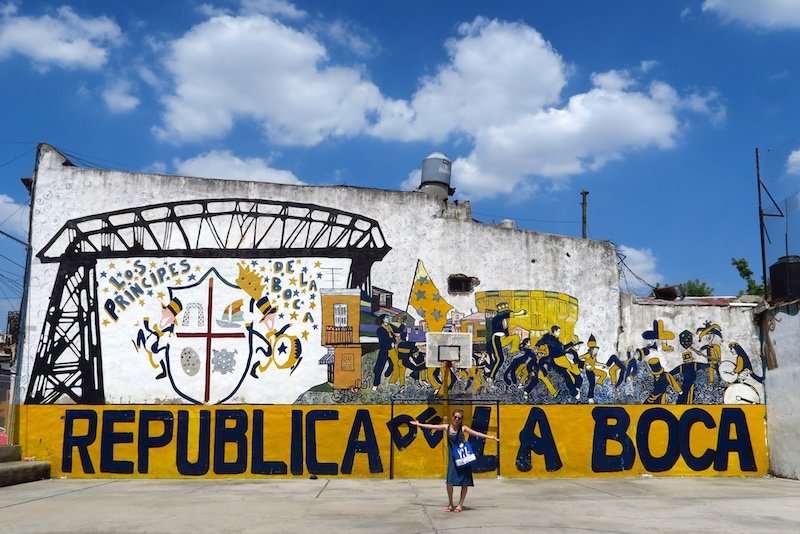
Why Buenos Aires hooks me: A rediscovery with fresh eyes
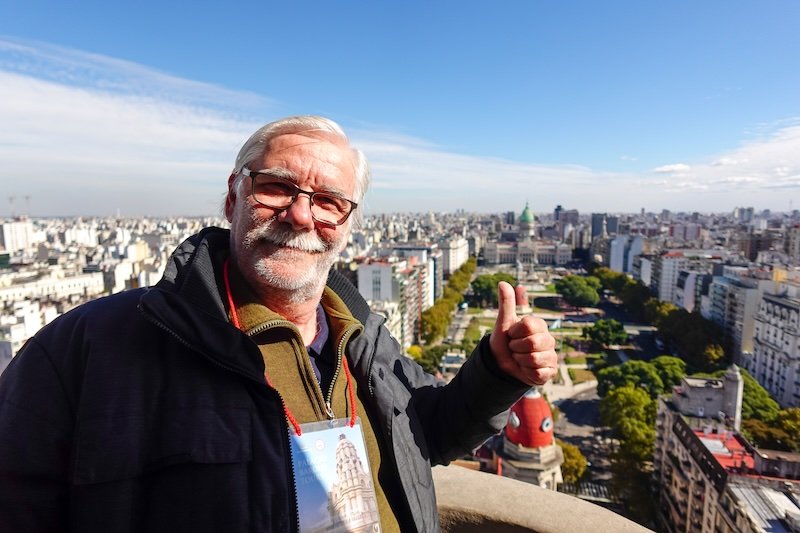
Prior to this most recent visit to Buenos Aires, I had only been to the city twice before. Once as a child when my family relocated to Argentina (we moved to a small village in the province of Cordoba put passed through Bs As), and then in my early twenties when my friend Rebecca and I decided to spend a few weeks backpacking the country. But even though this wasn’t my first visit, I was surprised by how much I had forgotten, or rather, hadn’t noticed the first two times around, so in many ways, this extended stay felt like my first true glimpse at Buenos Aires.
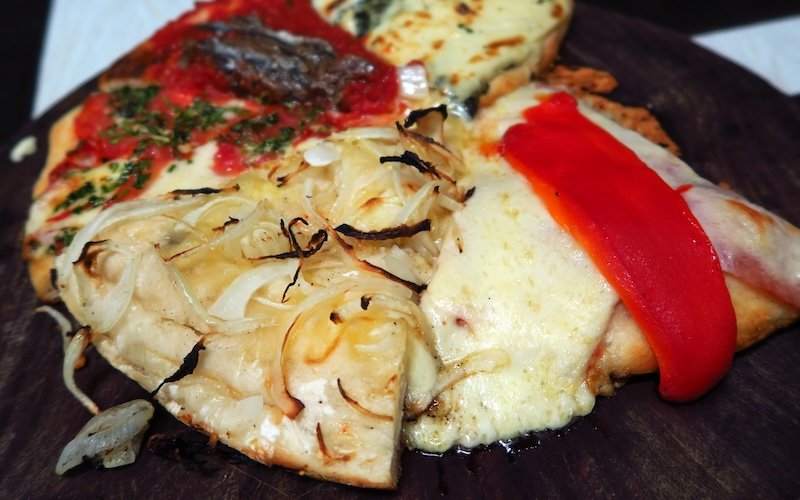
And so, I thought I would share my first impressions of Buenos Aires, Argentina. If you’ve been before, feel free to pipe in the comments and share some of your own impressions of the city. 🙂
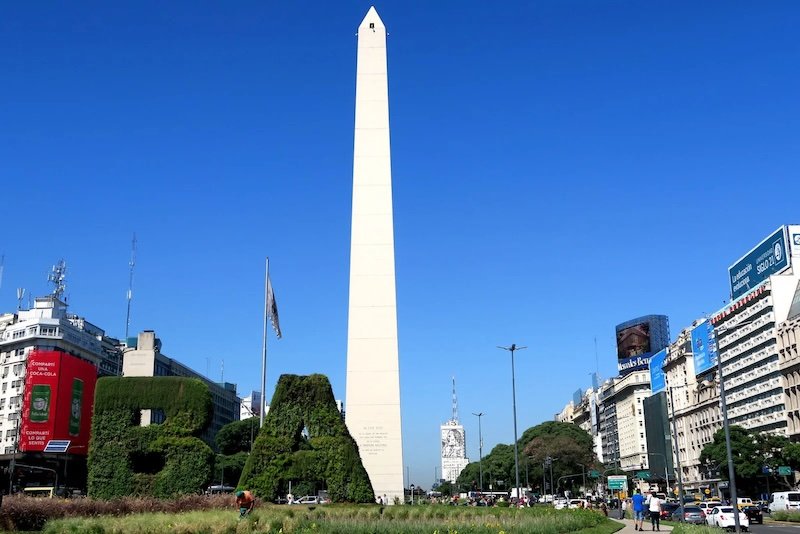
What I Love Most About Buenos Aires: All Of Its Unique Attractions, Food, Quirks and Charms!
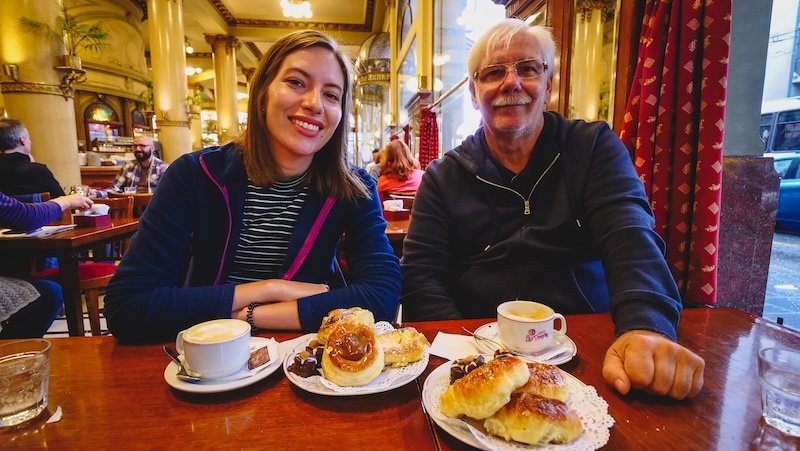
Café culture & quiet rituals
- Mornings always start with a café con leche (coffee with milk) and a few medialunas (croissants) or facturas (pastries). This is a staple at every single cafe. On that note, you will start drinking café con leche every day even if you were a tea drinker beforehand.
- People go out to cafes on their own. They’ll often be reading a book or a newspaper without the need to constantly be checking their cell phones. It’s quite refreshing.
Getting around the city
- The subway feels archaic and it is so loud in there that you can barely hold a conversation with the person next to you, but it’s cheap and it gets you where you need to go.
- This is a city filled with kamikaze drivers that hurl their vehicles through intersections. Beware: pedestrians do not have the right of way in this city.
Politics, icons & identity
- Politics aren’t a hush-hush topic and people openly discuss and argue their political views. Not only that, but there are plenty of billboards, slogans, and pieces of graffiti that make it clear who is pro or anti-government.
- Evita is either loved and revered, or absolutely despised. There doesn’t seem to be a middle ground.
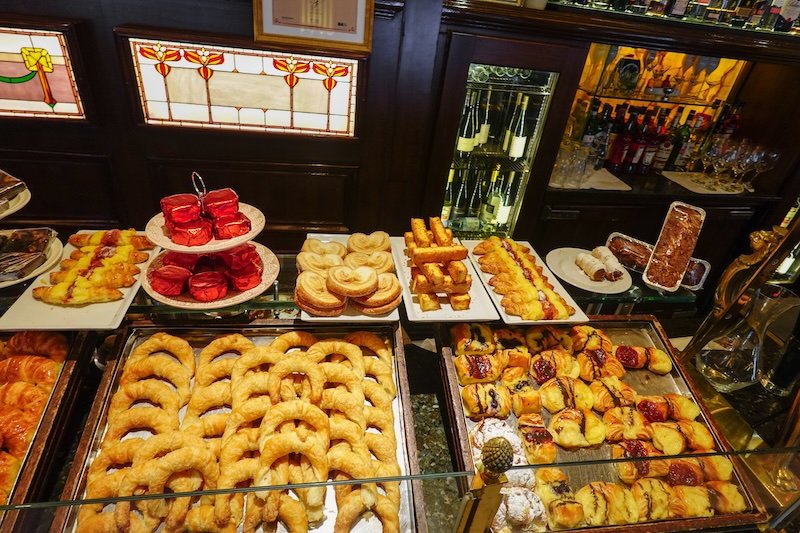
Sweet obsessions
- You will start putting dulce de leche on everything: bread, bananas, ice cream, alfajores, cookies, and eventually you’ll just start eating it out of the jar. No shame.
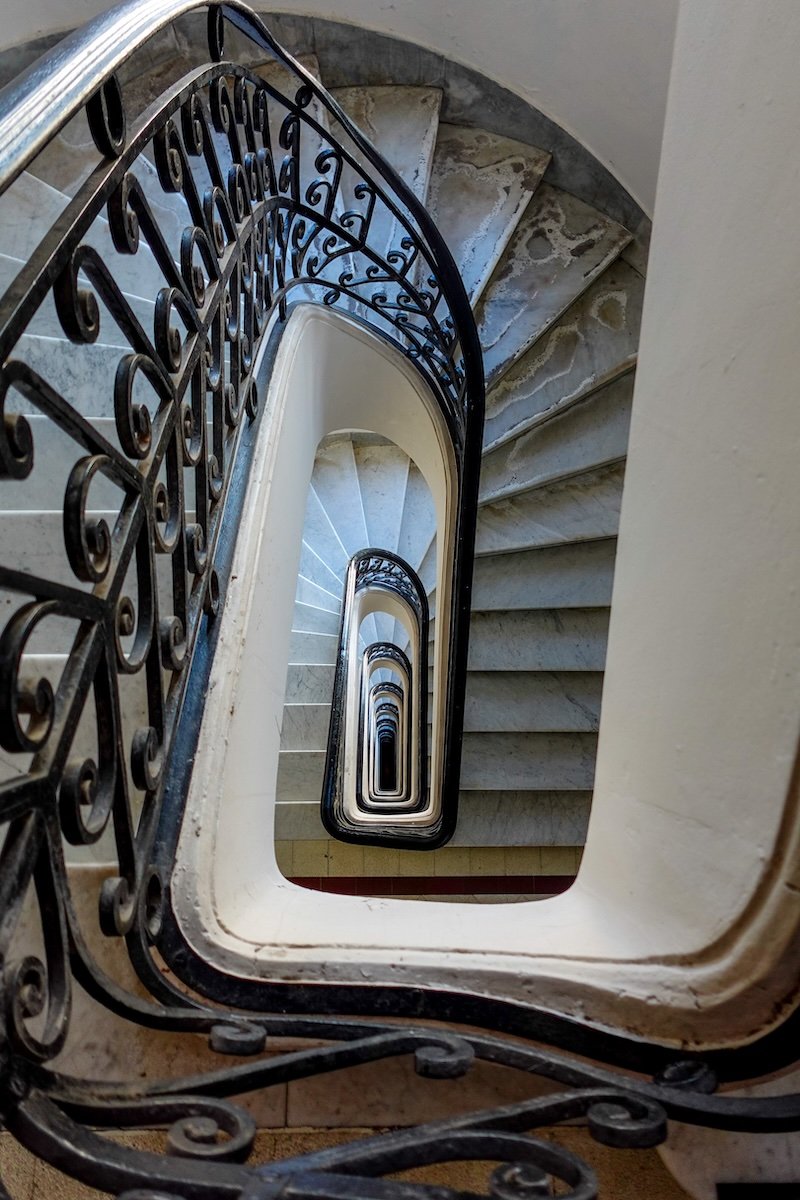
European echoes
- There’s a reason why Buenos Aires is called the Paris of South America. Sometimes you’ll turn a corner and see a cream coloured building with those iconic blue-grey rooftops that scream Haussmann and Paris.
Mate, everywhere
- There are entire aisles devoted to yerba mate. The green herb is drank as an infusion out of a gourd, and I’d go as far as saying that people are addicted to it. I saw people drinking mate while riding the subway, during government protests, during their lunch hour, walking in a parade, and waiting for a friend outside an apartment building. Porteños carry their hot water thermos and mate with them wherever they go.
Weather & sidewalk surprises
- If you’re visiting in the summer months, you’ll likely have AC drip on you while you walk down the sidewalk.
- And if you’re walking around the city after it has rained, you’ll likely be squirted by one of the thousands of loose tiles in the city.
Dogs of BA
- You will come across professional dog-walkers with 10-15 dogs peacefully walking side by side, and yes, you may feel the need to befriend them all…especially if you come across a sausage dog named Tequila who frequents the square in front of Recoleta Cemetery.
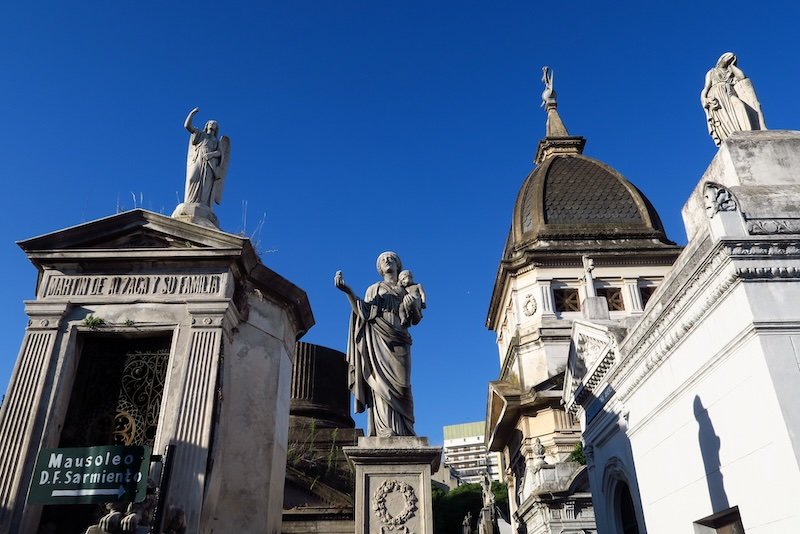
Language & emotion
- The porteño accent is abrasive. If you’re not familiar with it you might think people are angry or annoyed at you, but that’s just because the language and people’s mannerisms carry a lot of emotion. (I think this has something to do with the Italian influence!)
Demonstrations with drumbeats
- You will encounter some sort of demonstration or protest at least once a day, but they tend to be more on the festive side.
Street smarts
- There aren’t enough people picking up after their pups and you really need to watch where you step. Stoop and scoop, anyone?
Nightlife on tango time
- You will be tempted to attend a milonga (this is like a big tango dance party), but when you see that they suggest arriving early at 1:30 a.m. (if you want to get a table), or at 3:00 a.m. if you want to be there once the dance floor is already going, you might just change your mind. When do people find time to sleep?
- You will see more couples making out in parks, sidewalks, street corners than you have in any other city. PDA is at an all time high here.
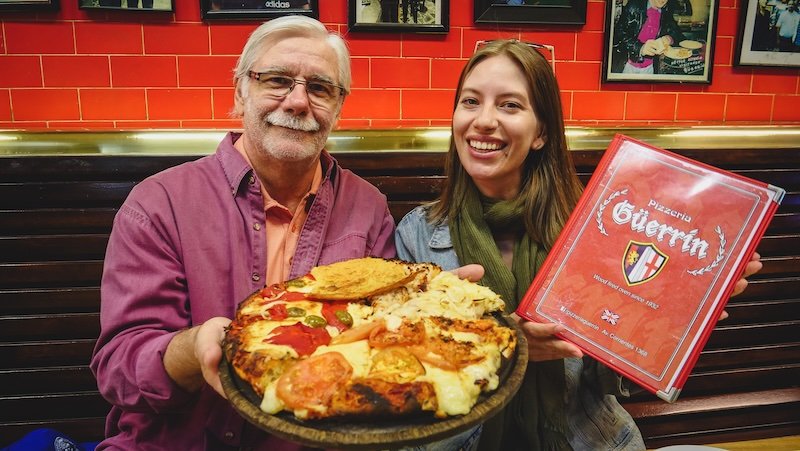
Pizza pit-stops
- Pizzerias are a very popular lunch stop and many people eat it standing up. Most pizzerias have a bar area sans stools or chairs, and every one just stands around chowing down slices with the thickest layers of mozzarella you have ever seen. Just head over to El Cuartito or Pizza Güerrin for some of the best slices you’ll ever taste in your life!
Old-world lifts
- You will ride in antique elevators with sliding metal doors that give you a full view of each floor as you slowly go up the building.
Late dinners are life
- If you show up for dinner before 8:00 p.m. you’ll find that most restaurants haven’t even opened yet. This is a culture of late night diners, so you’ll have to adjust your schedule and show up closer to 10:00 p.m.
A city of books
- This is a city of bibliophiles. Not only will you come across book shops every few meters, but there are lending libraries in the park. They also celebrate a national ‘Book Day’ (April 23), and the city hosts La Feria del Libro, which is one of the biggest book fairs in the whole world.
- Speaking of books, if window displays are any indicator, you’ll find that locals aren’t just interested in the latest flick turned book. They read philosophy, politics, and economics.
- Also, you will walk into bookstores that will make your jaw drop. You need to pop into El Atenéo to see this former theater turned book shop.
Emotions on display
- Argentinean men have no trouble showcasing their emotions. Whether it’s a man throwing a fit on the street after snapping his umbrella in half on a rainy day, or a two taxi drivers duking it out in front of you while they argue who has the biggest trunk, emotions are always high.
The art of tango
- Tango is one of the most passionate dances in the world, and you would not believe the skill that goes into learning it.
Beyond “just cookies”
- Alfajores are so much more than a ‘cookie glued with caramel’.
Helado heaven
- You will be tempted to go into every ice cream parlour you see; this city has some of the best ice creams in the world.
Money quirks
- You will experience the frustration of ATMs that only allow you to withdraw 2000 pesos at a time and charge an exorbitant 9% fee every time you do so. And if you’re unlucky you’ll even get to experience the ATMs with a 1000 pesos limit.
After-hours city
- You will wake up at 7:oo a.m., and see kids singing and laughing in the streets as they try to make their way back home after a night on the town.
- Siestas are mandatory if you want to function on the Argentine schedule.
- People love to talk in this city, and not just that, they speak loudly and over each other. This may look like a shouting match from the outside, but that’s just a normal conversation in Buenos Aires. This is a place for extroverts.
Bathroom staples
- Almost every single bathroom has a bidet. I’m guessing the French brought this custom over?
Steak culture
- Even if you rarely eat meat back at home, you’ll start going out to steakhouses at least once a week. Not only is beef more affordable, but it also tastes unlike anything I’ve had before.
- That being said, beware when you order an asado completo as this one can contain things like blood sausage, tripe, kidneys, and other strange cuts.
Big boulevards, big icons
- You will ride in a taxi down Avenida 9 de Julio at night and marvel at the splendor of the city as you zip past the Obelisk.
Friendly faces
- This is a city where stranger doesn’t mean danger. You can approach people, ask them questions, or even have a full conversation without anyone looking uncomfortable or suspicious.
What’s in your glass?
- You will choose wine over water at restaurant because it’s cheaper, and because this is Argentinean wine we’re talking about!
- A bowl of chimichurri should always be at the table. Same goes for a basket of bread and some butter.
- Don’t order bottled sparkling water when you can order a bottle of soda sifón. So much cheaper and a lot more fun to pour.
Style notes & warm welcomes
- Canes are not just walking aids; they are also very fashionable accessories.
- If you meet someone once, the next time they see you, you’ll be like family.
Eat well for less
- Food by the weight restaurants are super popular and you can eat like a king for a few dollars. Look for the ‘comida por kilo‘ signs.
Time flows differently
- Buenos Aires runs on a different clock. No one is in a rush here, which means no one is on time either. If you’re meeting with someone you’ll agree on a rough time, but then they’ll get there when they get there.
Green lungs of the city
- +They have a lot of parks and green spaces for such a big city.
Corner shops & communities
- All the convenience stores seem to be run by Chinese immigrants. I’m curious as to the history behind this.
Elegance at any age
- You will see the older generation dressed to the nines, even if they are just grabbing a coffee. So far the 2 individuals who impressed me the most were a man sporting a white suit with a pink button down shirt, and a woman dressed in an ankle length black dress, with chunky black heels, a Chanel tweed jacket, dark sunglasses, and a cane. They both looked to be in their mid to late 70s, they weren’t together, but they were each out enjoying their day.
- Life doesn’t end as a senior citizen! I didn’t see people looking dejected or defeated, on the contrary, they were out and about enjoying their Golden Years. My favourite moment was sitting next to these 2 ladies at a restaurant (who looked to be well into their 80s). They were both looking at the menu and the one lady said, “Oh, I don’t know, maybe I’ll just order something small and share,” and the other one retorted with that Argentine sass, “No, no, noooo! What are we even doing here? We are each going to get our own steaks and we are going to enjoy them!” And feast they did.

Football fever
- Whenever there’s a football match on, people will crowd around the TV. In restaurants you’ll notice that the tables around the television screens will fill up first, and there will even be people standing on the sidewalk, peeking through the windows to get an update on the score.
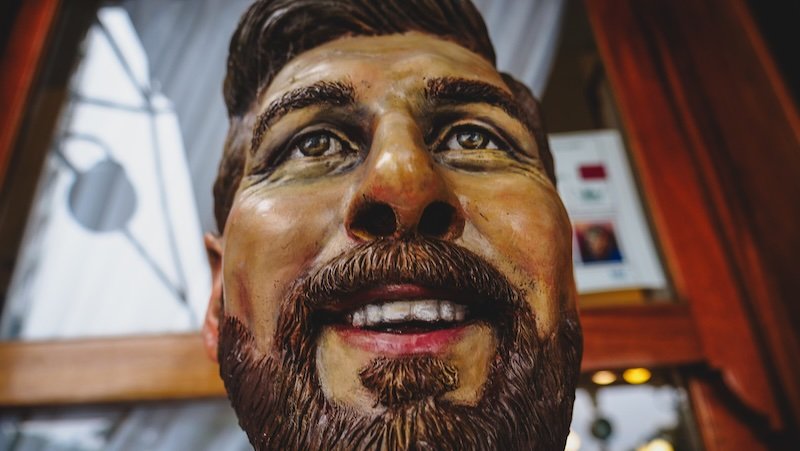
Home quirks
- You will find that single beds are really narrow. I’m not sure if this is just in homes with older furniture or if this is the standard, but single beds in Argentina remind me more of cots…or beds in Hong Kong.
Night shift recyclers
- Cartoneros have one of the hardest jobs. They descend into the city when businesses start shutting down for their day, and their job is to sort through the garbage looking for recyclables they can then sell for a profit. It’s not easy work.
Curious expats
- There are so many Bostonians in this city. I don’t know why, but it seems every American I met hailed from Boston. The two aren’t even sister cities, so if someone has the answer to this mystery, let me know!
Comfort classics
- Milanesas with mashed potatoes are a classic at the lunch table.
Market treasures
- If you are into collecting vintage seltzer bottles, the flea market in San Telmo will be a dream come true.
Giants in the plazas
- You are going to have trouble finding a bigger tree than the towering ombu trees scattered across the city, which are also hundreds of years old!
The urge to return
- Once you set foot in this city once, you’ll have the urge to come back again, and again, and again.
Your turn!
Buenos Aires Travel Tips (BA City Guide: Food, Neighbourhoods, Etiquette & Easy Plans)
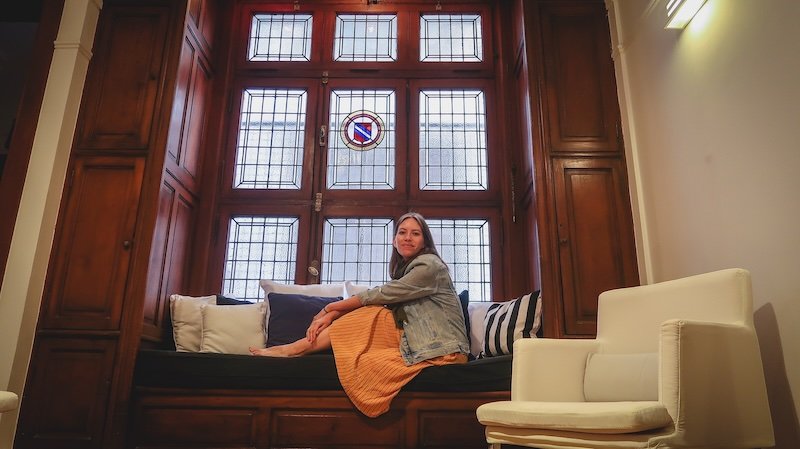
Neighbourhoods at a Glance (Pick Your Home Base)
Buenos Aires is a city of villages. Each barrio has its own rhythm, palate and personality. Here’s a quick guide to help you choose where to stay and play:
| Barrio | Vibe | Best For | Food & Drink Highlights | Watch-Outs |
|---|---|---|---|---|
| Palermo (Soho/Hollywood) | Trendy, leafy, late-night | Brunching, boutique hotels, nightlife | Craft burgers, vermouth bars, gelato labs | Can be noisy on weekends; pricier |
| Recoleta | Elegant, Parisian echoes | Architecture lovers, museum-hoppers | Classic confiterías, genteel parrillas | More formal; early closures on some streets |
| San Telmo | Bohemian, cobblestones | Flea markets, tango streets, vintage | Empanadas, bodegones (old-school diners) | Streets get quiet late; mind pockets on Sundays |
| Microcentro/Monserrat | Historic core | First-timers, quick access to icons | Café con leche culture, pizza-by-the-slice | Sleepy at night; traffic-heavy by day |
| Belgrano | Residential, graceful | Families, long stays | Asian food scene, leafy cafés | Farther from core nightlife |
| La Boca | Colourful, iconic corners | Daytime photo strolls, football | Choripán on the curb, strong coffee | Stick to main tourist arteries; head out before dark |
| Villa Crespo | Understated cool | Outlet shopping, bakeries | Jewish bakeries, low-key wine bars | Quieter vibe; fewer tourist sights |
| Chacarita/Colegiales | Up-and-coming | Artists, small bars | Natural wine, ferment joints, tapas | Farther flung—great if you love local life |
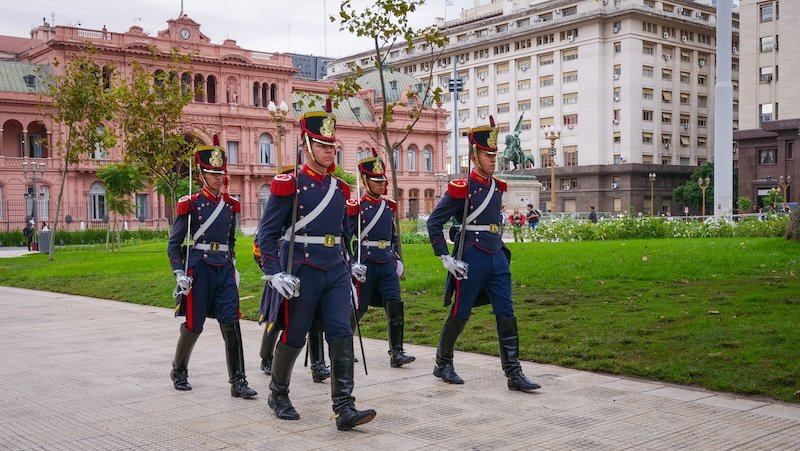
When to Visit (and What It Actually Feels Like)
- Spring (Sept–Nov): Balmy, jacarandás bloom purple, perfect for park picnics and cemetery strolls.
- Summer (Dec–Feb): Hot and humid; AC drip is your constant companion. Late-night dining makes more sense when you’re hiding from daytime heat.
- Autumn (Mar–May): Dreamy golden light, sweater weather, bookshop crawls.
- Winter (Jun–Aug): Cool and crisp; ideal for coffee marathons and museum days. Pack layers for chilly nights.
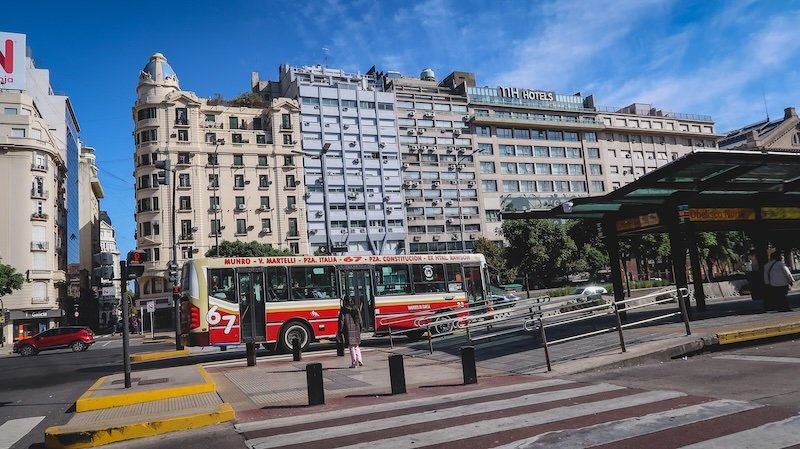
Getting Around BA
Subte (Subway)
Fastest for cross-city hops. It’s loud, a bit old-school, but wonderfully efficient. Buy/reload a SUBE card at kiosks and stations.
Buses (Colectivos)
They go everywhere. Use a maps app to plan routes, tap your SUBE when boarding, and hold on—drivers are auditioning for Formula 1.
Rideshares & Taxis
Rideshare apps work well in the core. Taxis are plentiful—only hop in official ones and confirm the meter is on.
Walking
Absolutely yes. BA rewards wandering: façades, plazas, bookshops, and sudden tango in the street.
Biking
EcoBici (public bikes) gets you around parks and quieter barrios. Helmets if you have one—drivers can be, let’s say, expressive.
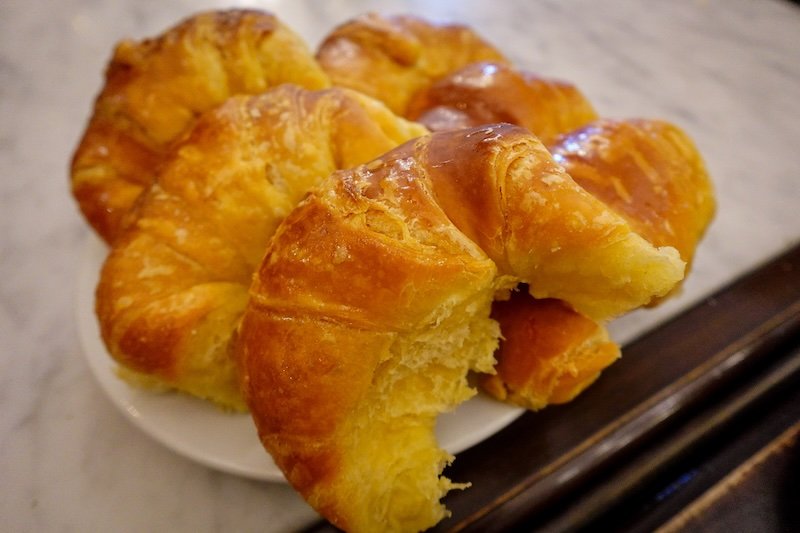
Eat & Drink Like a Porteño
Breakfast & Merienda (Snack O’Clock)
Expect café con leche with medialunas (buttery, sticky croissants). Come 5–7 p.m., slide into merienda: coffee, tostados (ham & cheese), pastafrola, alfajores, gossip.
Parrilla 101 (Steak without Stress)
- Cuts to know: ojo de bife (ribeye), bife de chorizo (sirloin), entraña (skirt), vacio (flank).
- How it’s cooked: wood or charcoal; jugoso is rare, a punto is medium.
- Don’t skip: provoleta (grilled provolone), morcilla (blood sausage), papas a la provenzal (garlic-parsley fries), chimichurri on everything.
The Pizza Situation (Thick, Gooey, Glorious)
BA pizza is unapologetically heavy on mozzarella. Try fugazzeta (onion + cheese) and al molde (fluffy pan style). Eat at the bar, standing shoulder-to-shoulder with the lunchtime rush.
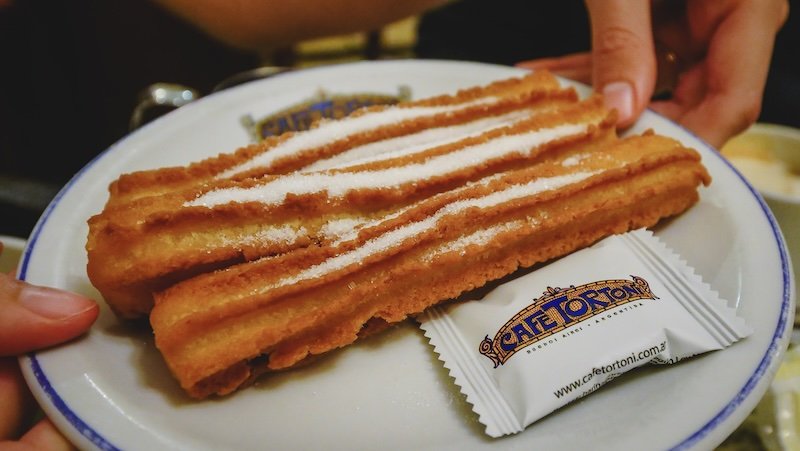
Sweet Tooth Hall of Fame
- Dulce de leche on everything.
- Alfajores (two cookies hugging dulce de leche).
- Helado (gelato): go for tramontana, dulce de leche granizado, frutilla (strawberry).
- Churros! Bet you can’t just have one!
What to Sip (Beyond Malbec)
- Vino: yes, but don’t stop at Malbec—try Bonarda, Cab Franc, Torrontés.
- Fernet con cola: an acquired taste; it will grow on you (or it won’t).
- Vermú hour: “vermouth con soda” over ice with olives and orange—aperitivo heaven.
- Soda sifón: the tabletop seltzer bottle you didn’t know you needed.
- Mate: bring a thermos; accept a sip if offered; never move the bombilla (straw).
My Porteño Day on a Plate
- Morning: café con leche + 2 medialunas.
- Merienda: tostado + licuado (fresh fruit shake) or a slice of chocotorta.
- Night: parrilla spread with wine…late!
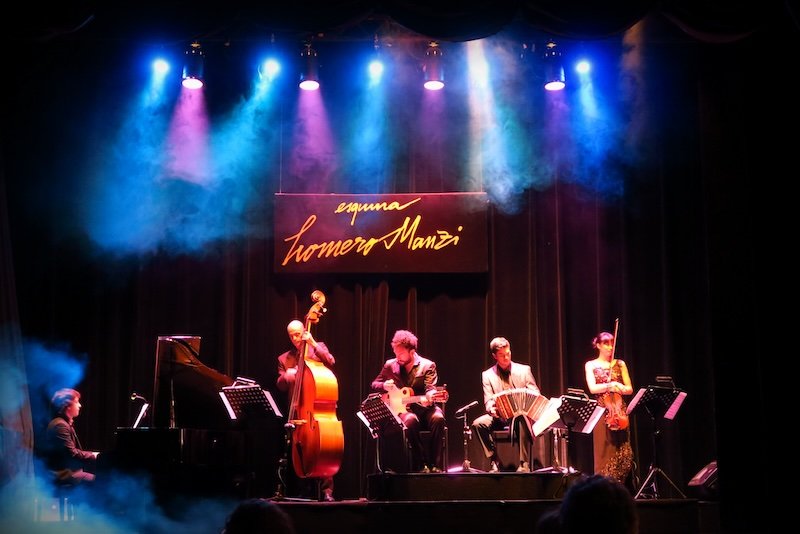
Culture Crash Course (Tango, Books & Ball)
Tango: Three Ways to Experience It
- Show: choreographed, theatrical, dinner optional. Easy intro, sparkly costumes.
- Class + Milonga: learn the basics, then dance or observe the real thing. Arrive after midnight if you want to see it happen.
- Street snippets: San Telmo’s squares sometimes host casual dancing—perfect for people-watching.
Bookish BA
Make time for El Ateneo Grand Splendid (theatre-turned-bookshop), the Feria del Libro if you’re in town, and tiny independent librerías where philosophy outnumbers beach reads.
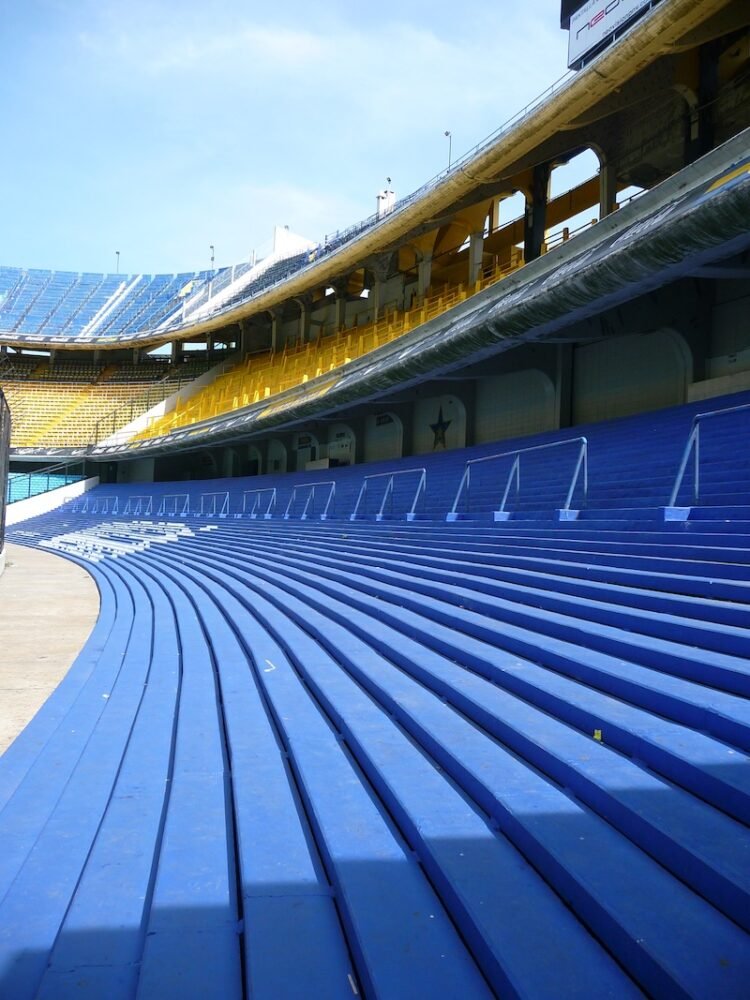
Football Fever
On match days, bars and cafés fill with eyes glued to the screen. If you go to a stadium, go with a trusted tour or local friend—passion runs hot.
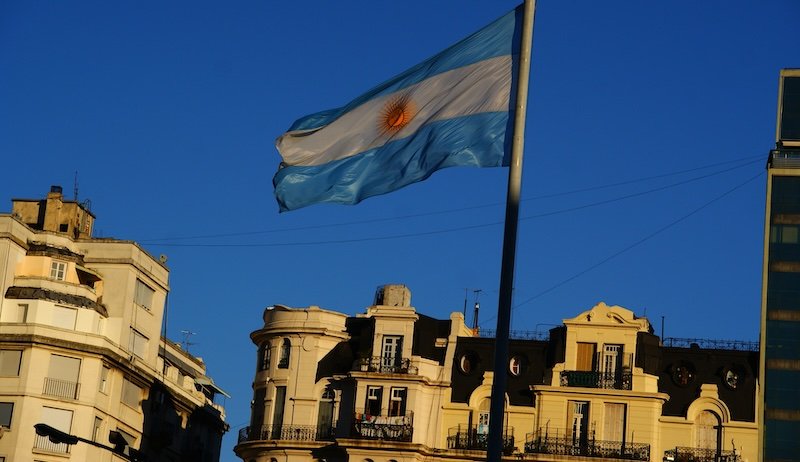
Money, Phones & Staying Street-Smart
Money
Argentina’s economy is…creative. ATMs often have low withdrawal limits and high fees. Cards are widely accepted in the core, but small kiosks and markets love cash. Keep small bills for taxis/snacks. If you bring foreign currency, keep it crisp and change only what you need at reputable places. Rates fluctuate—avoid quoting numbers; use common sense and ask locals where they’d change money today.
Phones
Pick up a local SIM for maps and ride-hailing. Wi-Fi is common in cafés, but a SIM makes life easier when you’re hunting empanadas.
Safety Snapshot
- Keep your phone off the edge of café tables (bag snatches happen).
- Cross with the crowd; drivers are enthusiastic.
- Use rideshare or radio taxi at night; confirm your destination before moving.
- In touristy areas, carry bags in front; leave passports in the hotel safe.
- If something feels off, trust your gut and change streets.
Quick Safety Checklist
- ☐ Daypack zipped and in front in busy markets
- ☐ Phone tethered or in a zipped pocket
- ☐ Photocopy/phone photo of passport separate from original
- ☐ Pre-booked ride after midnight
- ☐ Small bills accessible; big notes hidden away
A Lazy-Active 3-Day Plan (Tweak to Taste)
Day 1 – Historic Core + Recoleta
- Morning: Plaza de Mayo, Casa Rosada, Café Tortoni pick-me-up.
- Noon: Subte to Recoleta Cemetery (Say hi to Evita), then leafy plaza time.
- Merienda: medialunas at a classic confitería.
- Evening: Wine bar crawl + dinner in Recoleta.
Day 2 – San Telmo + La Boca + Costanera Sur
- Morning: San Telmo Market (Sundays are magic).
- Lunch: Choripán at Costanera Sur.
- Afternoon: Painted Caminito in La Boca (stay in the busy bits).
- Night: Early tango class + milonga peeking (or a show if you want glitter).
Day 3 – Palermo Parks + Museums + Nightlife
- Morning: Bosques de Palermo (parks, lakes, rose garden).
- Culture hit: MALBA or Museo Nacional de Bellas Artes.
- Merienda: Palermo café crawl (gelato reward).
- Late: Dinner at a parrilla, then speakeasy/vermú bar.
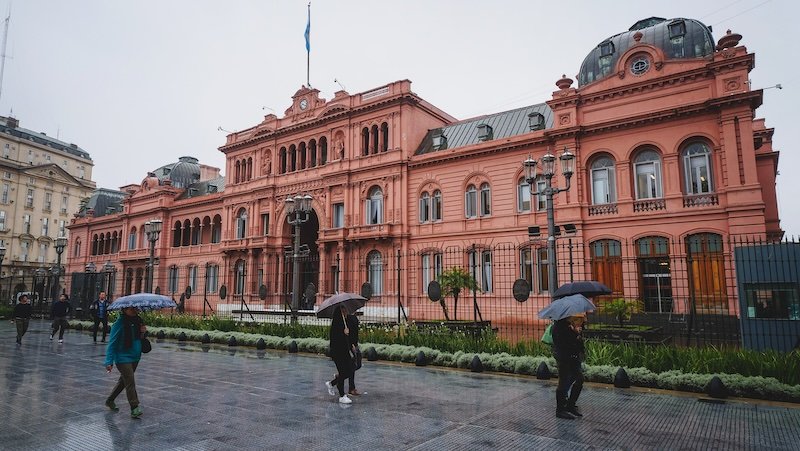
What to Pack (and What Locals Actually Wear)
- Layers for day-to-night temperature swings.
- Comfy shoes for cobblestones + park loops.
- Crossbody bag with zipper.
- Smart casual for dinner (porteños are effortlessly put together).
- Tiny umbrella or light rain jacket (loose tiles + puddles are mischievous).
- Travel-sized stain stick because dulce de leche has no mercy.
Etiquette Nods That Go a Long Way
- Greet with a kiss on the cheek (one!) among friends/acquaintances.
- Please/thank you—por favor, gracias.
- Show up fashionably late; confirm if a time is flexible.
- Accept mate when offered (sip, return, don’t stir the straw).
- Talk with your hands—it’s practically punctuation.
Budget Snapshot (Very Approximate, Because BA)
- Sleep: Hostels to boutique hotels; Recoleta/Palermo cost more than San Telmo/Villa Crespo.
- Eat: Pizza-by-the-slice and lunch menus are great value; parrillas range from modest bodegones to special-occasion splurges.
- Do: Most plazas, parks, neighborhoods are free; museums often have affordable entry and free days.
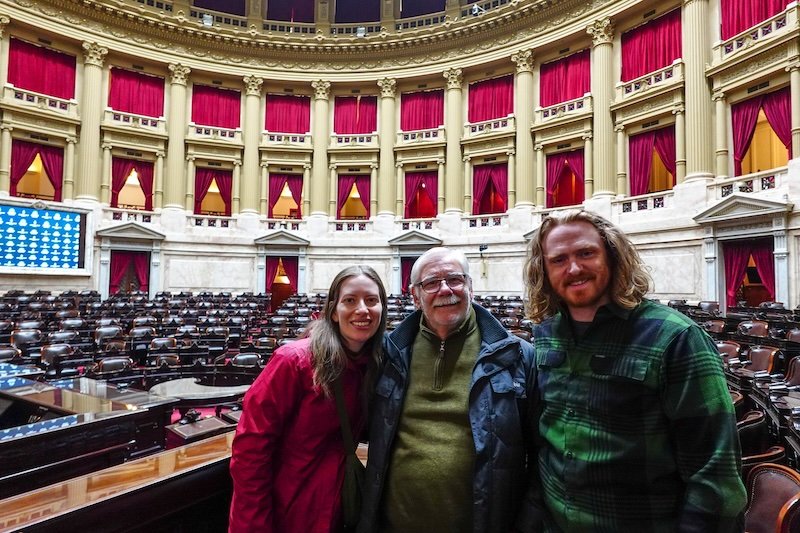
Buenos Aires FAQ
What’s the best neighborhood to stay in for a first visit?
For a blend of safety, cafés, and easy evenings, Recoleta and Palermo are hard to beat. Recoleta feels elegant and central for museums, while Palermo is leafy and buzzing with restaurants and bars. If you love markets and old-world charm, San Telmo makes a wonderful base—especially over a weekend.
Is Buenos Aires safe for solo travelers at night?
Main arteries in Palermo, Recoleta and parts of Microcentro remain lively late, but standard big-city caution applies. Use rideshares or radio taxis after midnight, keep your phone away from the edge of tables, and stick to well-lit streets. If you’re going to a milonga that runs until dawn, pre-book your ride home.
How late do people actually eat dinner?
Late! Many restaurants open around 8 p.m., but the dining room doesn’t fill until 9:30–10:30 p.m.. If you’re starving earlier, embrace merienda at 6 p.m. and treat dinner like a second act. Your body clock will adjust—and might never forgive you when you go home.
Do I need to book tango shows or milongas in advance?
For big-name tango shows with dinner, booking ahead is smart, especially on weekends. For milongas (social dance nights), you can usually pay at the door. If you plan to take a class + milonga combo, reserve your spot with the studio and arrive a touch early.
Can vegetarians eat well in a steak-obsessed city?
Absolutely. Most parrillas offer grilled provolone (provoleta), salads, fries, and roasted veggies. Beyond that, Buenos Aires has a thriving veg-forward scene: empanadas stuffed with humita (corn), caprese or spinach, Italian pasta houses, and hip cafés that love a roasted squash moment.
Is tap water safe to drink?
In central Buenos Aires, many travelers drink the tap water without issue, but tastes vary and buildings are old. If you’re unsure or sensitive, stick to bottled water or a refillable bottle with a filter. Sifón soda water on tables is a classic and perfectly fine to drink.
How do I pay for public transport?
Pick up a SUBE card at kiosks or Subte stations, load it with cash, and tap on buses and in the Subte. One card can be shared among multiple people—just tap separately for each rider. Keep a little balance on it for airport buses and last-minute hops.
Are ATMs reliable, and should I bring cash?
ATMs work but can have low withdrawal limits and high fees. Cards are widely accepted in restaurants and shops, but it’s smart to carry some local cash for kiosks, markets and tips. If you bring foreign currency, exchange only what you need at reputable places; ask locals where they’d go this week because things change.
What’s the dress code for nights out?
Smart casual wins. Porteños love polished basics: dark denim or trousers, boots or sleek sneakers, a crisp shirt or a simple dress with a jacket. You don’t need to dress up excessively, but tidy and intentional gets you into most places without a second glance.
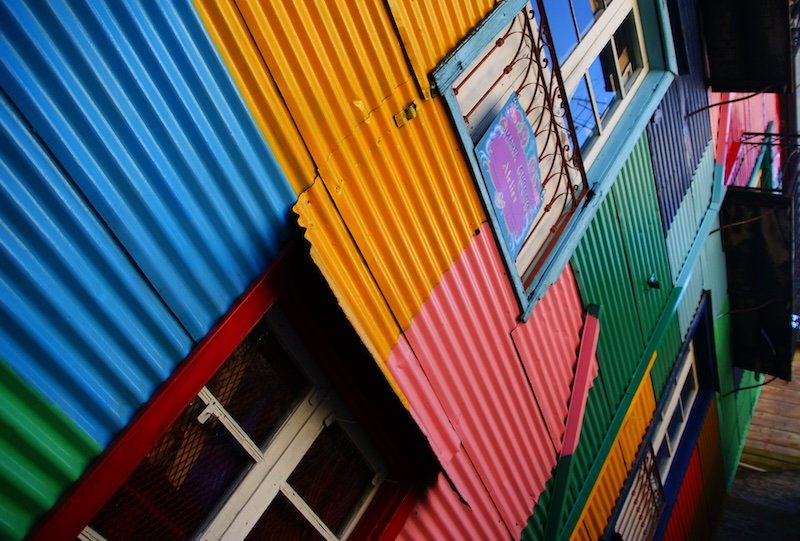
Can I visit La Boca independently?
Yes—by day, stick to the colorful Caminito area and main streets. It’s photogenic and lively when shops are open. Avoid wandering into the surrounding residential blocks, and plan to head out before dusk. If you want to go deeper (like a stadium visit), go with a tour or a local friend.
What should I buy as a souvenir that I’ll actually use?
A leather belt or wallet, a mate gourd with bombilla, a vintage sifón soda bottle, hand-painted fileteado art, or a stash of alfajores for your carry-on. If you love books, Spanish editions from El Ateneo make beautiful keepsakes—even if you just admire the covers at home.
How many days do I need to “get” Buenos Aires?
You can feel the pulse in 3 days if you plan well, but 5–7 days lets you settle into the café ritual, catch a tango night (or two), browse markets, and enjoy an unhurried parrilla dinner without watching the clock. It’s a city that rewards lingering—there’s always one more medialuna to try.

Have you been to Buenos Aires?
What were some of your first impression of the city?

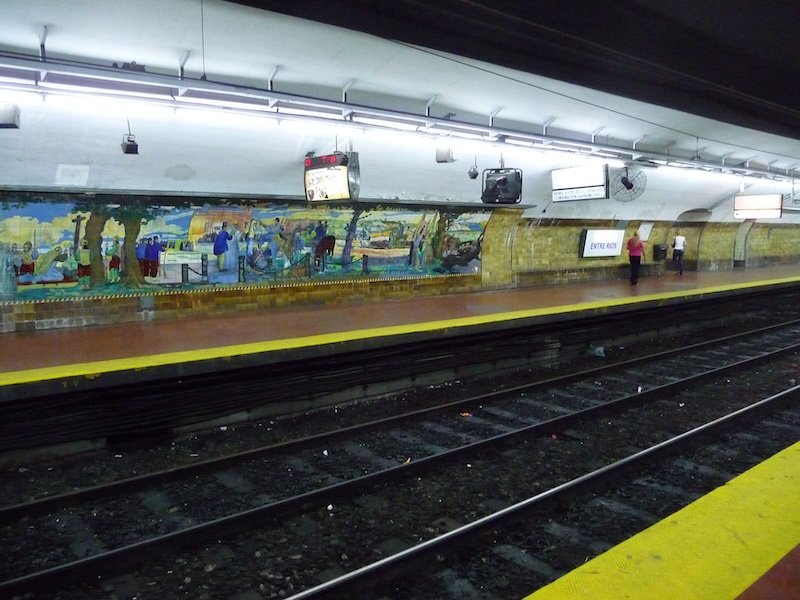
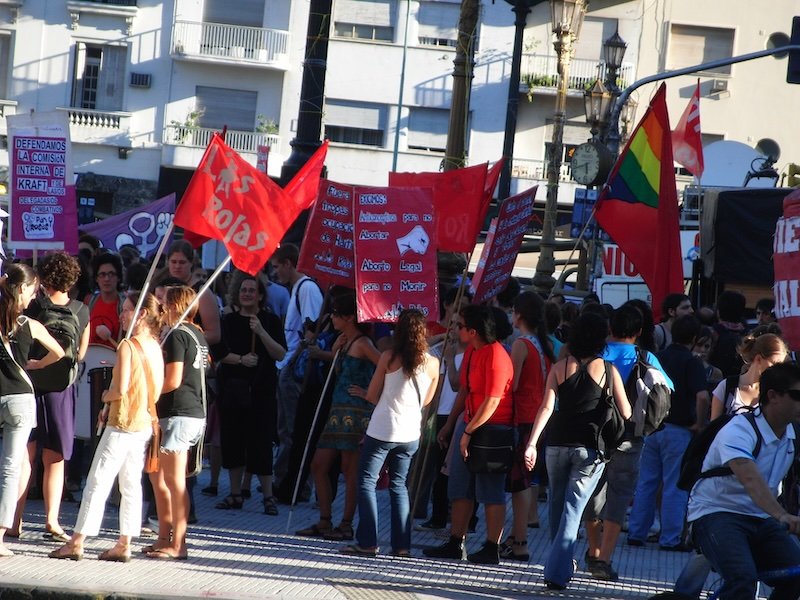
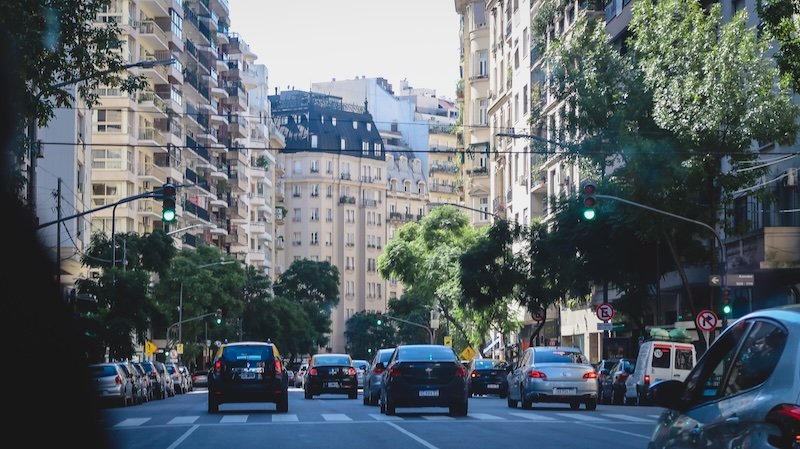
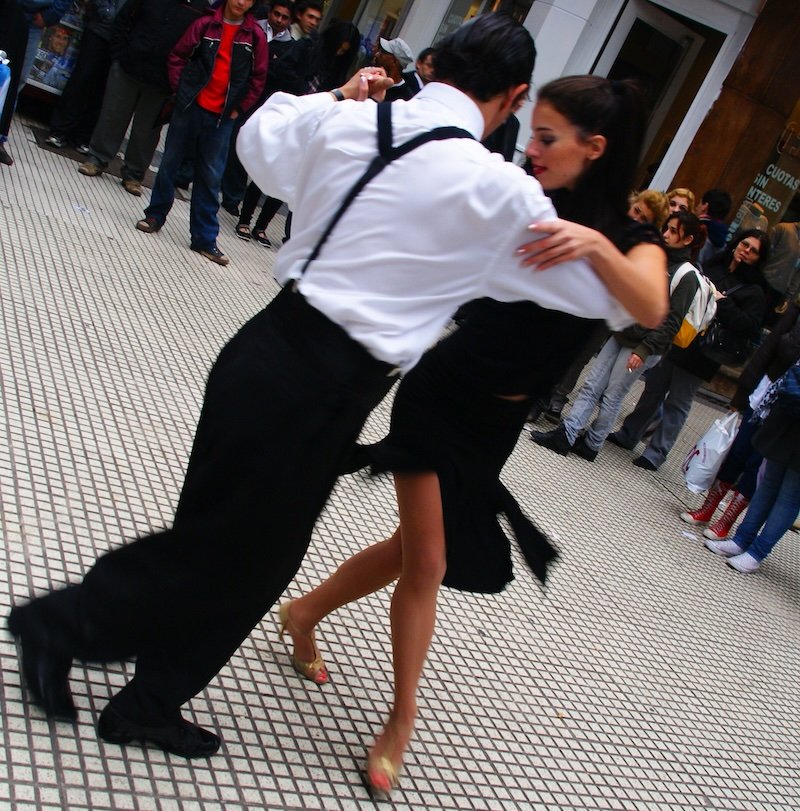
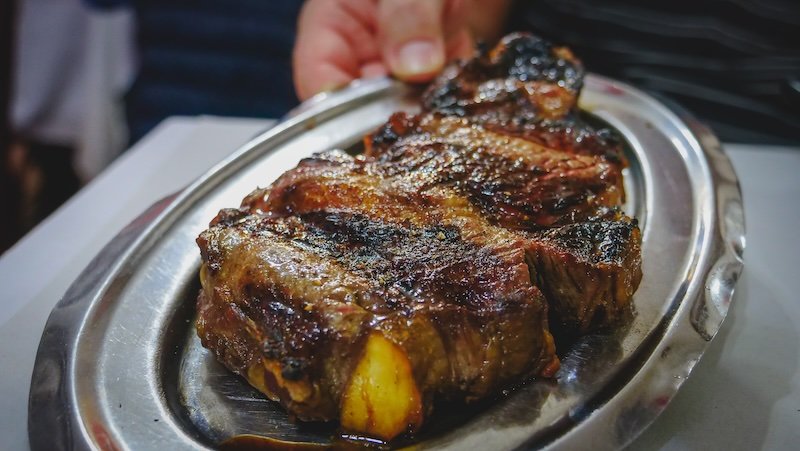
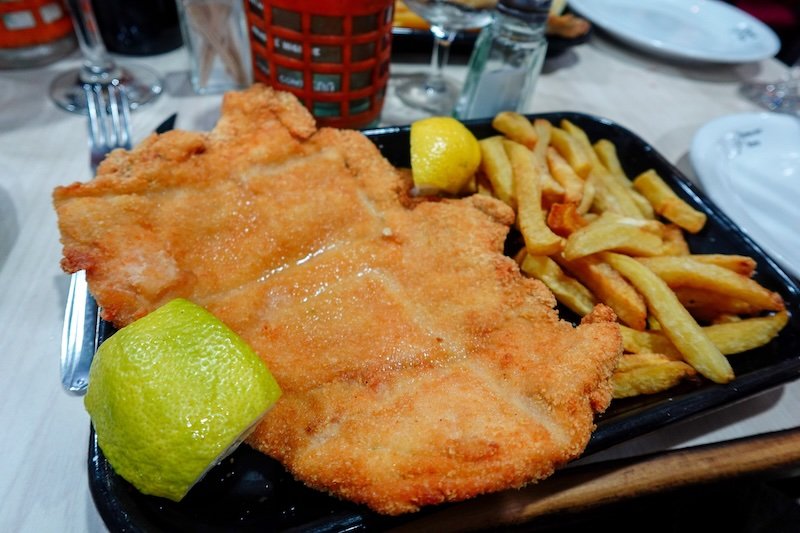
You are giving me serious wanderlust now! Buenos Aires is #1 on my list of cities to visit in South America… Just need to find a way to get some cheaper plane tickets from NY! 🙂
The Argentinians are very emotional people – that is what I have gathered from what you have written. Very insightful things to notice and put into words. And yeah, when do they find the time to sleep?
Hi Audrey,
Thank you for your blog, it had great information for my upcoming trip to EZE. Can you suggest economical shopping areas
Audrey! I am from Argentina and this is the first time I read something so close and true about how we are and live. You capture the argentinian indentity perfectly. Thank you!
Excellent post!! I have lived in BA for over a year now, and you just hit sooo right with your descriptions! Thanks for sharing!
Glad you enjoyed the post, Becci! And I hope you’re having a wonderful time in Bs As – it’s such an amazing city. 🙂
I am, thank you! And yes, truely it is 😊
I’m in Buenos Aires right now reading your post in a café and your insights are so spot on! I’ve been here for 10 days now and reading this I’m simply laughing and nodding 🙂
Regarding pizzerias… i suggest replacing Guerrin with Banchero.
If you are into ice cream definitely you need to go to Cadore which is located a couple of blocks from Banchero.
AND try Milanesa a la Napolitana! A MUST.